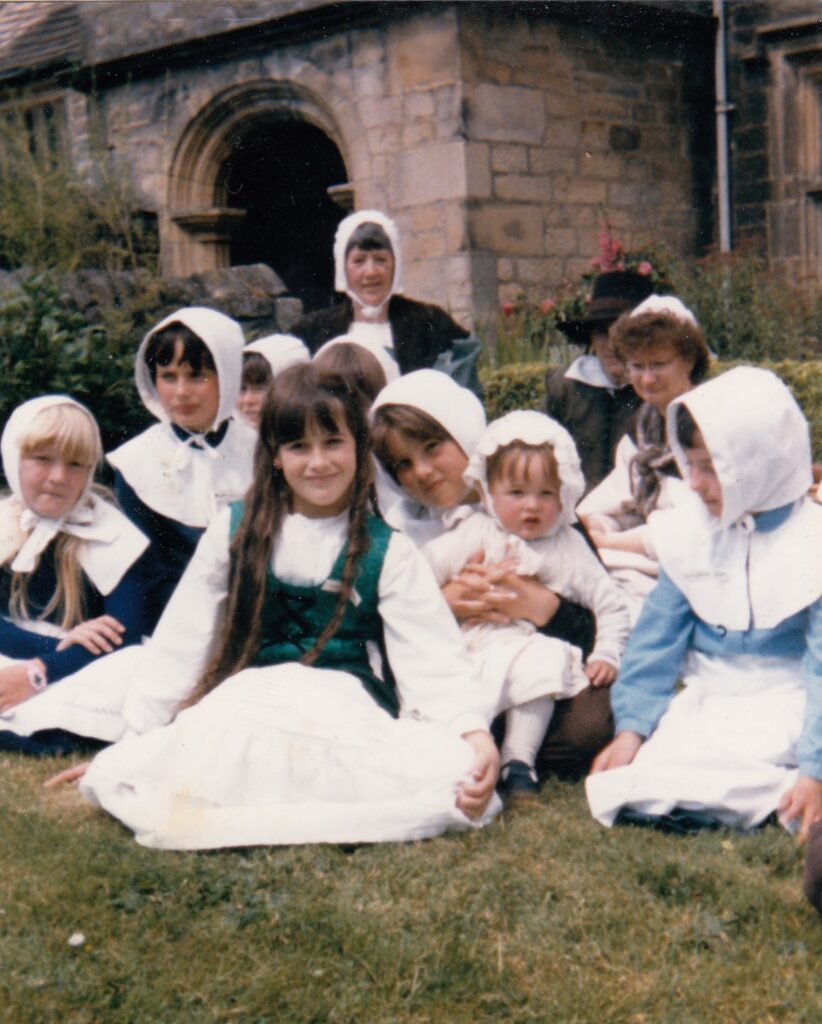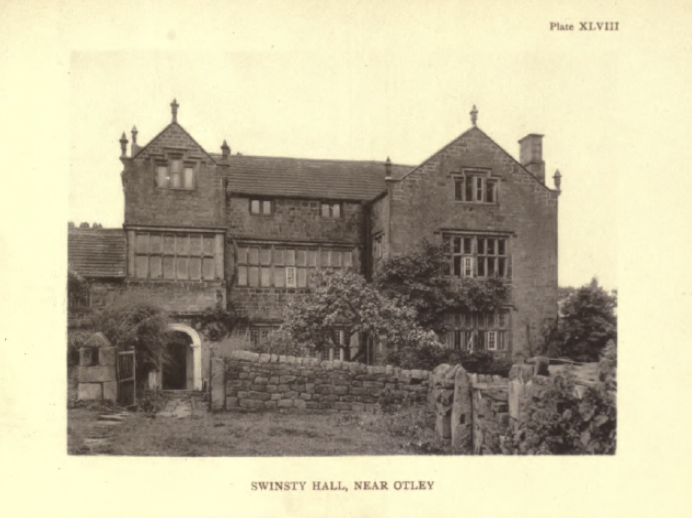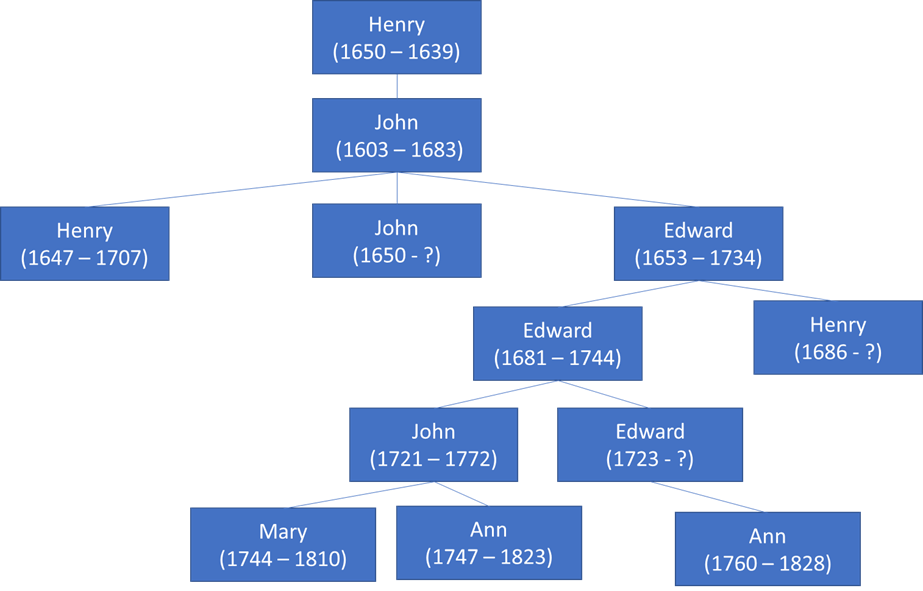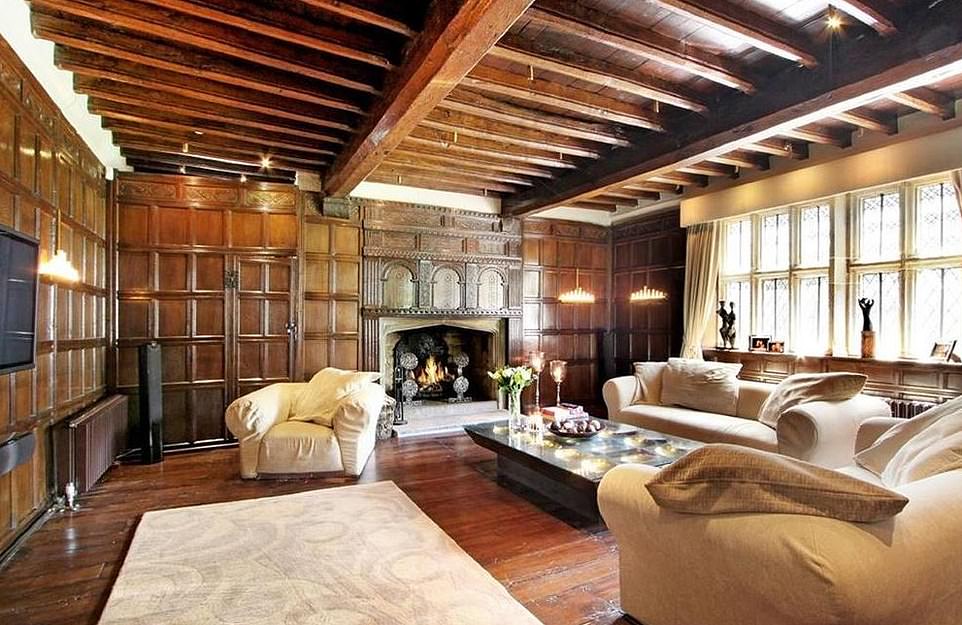
On 3 July 2021, as England were preparing for their quarter final match against the Ukraine, I was in Fewston – catching up with my oldest friend, Andrea (featured in the photo above), traipsing through knee high grass in the graveyard with my third cousin, Paul, and reliving childhood memories gazing across the adjoining reservoir towards the gabled rooftop of Swinsty Hall.
Later I was idly wondering whether we were related to any of the five Yorkshire-born players and Google, being Google, gave me an answer. It turns out our family connection to the England team is not with the players, but with the manager, as the gabled rooftop I was reminiscing over is the current home of Gareth Southgate and this being the Washburn Valley there was bound to be a family connection.
Back in 1985 my sisters & I were all attending the tiny village school of Norwood. What do I mean by tiny? I had two fellow pupils in my year group (one being Andrea). My sister Helen had none, she was the sole person in her school year. When I left the following summer there were twenty-seven pupils and when the school closed a few years later there were just sixteen. By contrast, I was walking with a London-born friend last week. As we passed one of the ubiquitous four-story Victorian London primary schools, he commented that he had long thought everyone went to schools of this kind where sixty plus pupils were admitted every year.
When one or two teachers are trying to effectively educate children ranging in age from four to eleven you have to be creative and engage with the whole community and that’s how we ended up at Swinsty Hall re-enacting the seventeenth century studying clothing, food, dancing & the English civil war. We were joined by parents (well, mothers), younger siblings and even the local vicar all dressed in seventeenth century garb. Lunch was served on the massive oak table in a wood panelled dining room and afterwards there was square dancing on the lawn surrounded by old flower beds.

By 1985, Swinsty Hall was somewhat neglected. It had been owned by the Leeds Corporation & the Yorkshire Water Authority since the reservoir had been built in the 1870s, at times having multiple occupancy at others having large sections boarded off. Perhaps as a result of that neglect my memories accord with much of William Grainge’s description in his 1895 book “The history & topography of the townships of Little Timble, Great Timble and the hamlet of Snowden in the West Riding of the County of York”.
“The front of the hall is simple, yet elegant, consisting of a centre and projecting wings, the latter like square towers, finished with gables and pinnacles at the angles and apex…..On the right is the great hall, a spacious room twenty-one feet square. The beams supporting the upper floors throughout the building are splendid specimens of oak timber, resting on corbels springing from the walls. The floor of this room has been originally laid with lozenge-shaped flagstones, some portions of which yet remain near the walls…… A door leads from this into the drawing-room, or dining-room;…..The doors are all made of oak, without nails; the battens; four in number, being fixed by wooden pins, with the heads projecting a little by way of ornament on the inner side, the two middle ones with three rows, and the top and bottom with only one each. This room is wainscoted with panelled oak, finely carved at the upper border and around the fireplace…… The window is of twelve lights, the upper six of which yet retain their antique glazing, being variegated with stained glass; on one piece are the letters H.R.G. and the date 1627, the initials of Henry Robinson, the first owner of Swinsty of that name, and his wife. In this room is preserved a piece of the original furniture — a dining table, 17 feet 6 inches in length, by 3 feet in breadth, and the same in height, made of planks of solid oak, two inches thick, with massive frame and legs of the same material. This table has doubtless played its part in many a hundred feasts, and it is yet as strong, and clean, and bright, as when the wealthy owner of Swinsty, in the day of its highest greatness, sat at its head and dispensed hospitality. The forms, or benches, on which the feasters have been perched also yet remain; they are of such height that those seated on them would have to rest their feet on the lower frame, as they could not reach the ground……In the garden, a few old-fashioned plants remain, such as the Robinsons cultivated when they dwelt here ; roses red and white, aconite, rosemary, balm, lavender, peony, box, and golden rod ; while the wall is partially hidden by the green and golden masses of stone crop, and the walls of the old mansion are coated over with grey and golden lichen”.
Swinsty Hall’s heyday WAS the seventeenth & early eighteenth centuries and what i wasn’t aware of back in 1985 was that I was highly likely to have been feasting & dancing in the footsteps of my ancestors.
For much of the rest of this blog I have to thank my third cousin, Paul for his research. The same third cousin who was wading through knee-high grass in Fewston church. Paul & I first connected through a DNA match site, which is kind of strange as we grew up in the same village (albeit a few years apart) and he knew my uncle from primary school. He even appears on the wallpaper charts I drew up with my Grandma back in the 1980s. We are third cousins through Amelia Bradbury & Michael Houseman (the parents of Jesse Houseman, the father of my Grandma, Mary Houseman). Such is the inter-related nature of small Yorkshire villages I have since discovered several more distant connections. One of these connections is the Hardisty line which leads us back to the Robinsons the owners of Swinsty Hall for nearly two hundred years. Or rather almost……
Swinsty “old” hall was built for the Wood family in the first half of the sixteenth century. The far more substantive “new” hall was added in the 1570s, a wedding gift for Francis Wood & Ellen Sutell from Ellen’s father, Henry. However, Francis seems not to have had the means to maintain such a grand property. By 1590 he was in such debt that he signed over the property to Henry Robinson in exchange for writing off a debt of £2,000. Thus, Henry became the first Robinson to own Swinsty Hall.

Henry left Swinsty Hall to his son John. That is relatively straightforward.
John divided his estate up early. He gave Swinsty “old” hall to his son John, who then sold it to his older brother Henry for a nominal sum of just five shillings in 1681. John then deeded the “new” hall to Henry in 1683 thus re-uniting the two parts.
Henry had no heir and so left Swinsty Hall to his nephew, also named Henry. Henry then sold the property to his father, Edward, in 1725 and his father also inherited the remainder of the estate when this Henry, too, died childless.
Edward decided to bypass his children and bequeathed Swinsty Hall direct to his grandson John. And whilst John had one son, he died before John and the Hall was left to his daughters Mary & Ann, finally ending Robinson ownership after 182 years.
Meanwhile, Mary & Ann’s cousin, another Ann Robinson married Samuel Hardisty & they had a child Anne Hardisty in 1782. Anne is Paul’s 4 x great grandmother. Knowing I was related to Paul via the Hardistys I naively thought that meant that I too was related to the Robinsons and thus to the owners of Swinsty Hall. It turned out to be a little more complicated. Anne married another Hardisty, William, whose grandparents, Robert Hardisty & Ellen Kirton were my 7 x great grandparents. Whilst the Hardistys and the Kirtons were both established Fewston families it seems that they may have only been feasters at that grand oak table rather than the ones sitting at the head dispensing hospitality and it is not beyond the realms of imagination that they might have danced in the very same gardens my immediate family did in 1985.
So, whilst my connection to the Euro2020s seems somewhat tenuous, I can perhaps say that both my seventeenth century ancestors and my more immediate family have eaten in the grand panelled dining room of the current England manager’s home.
With much gratitude to my third cousin, Paul, Norwood County Primary School and my Hardisty ancestors. `



Hello. I read your article with much interest. I am a direct decedent of the Robinsons. My great great grandfather was Robinson Gill, who donated the funds for the Robinson Library in Timble. My daughter and I will be visiting the library in October and plan on looking, at least from a distance, Swinsty Hall.
Interesting read! Now some where along the line the Hardistys & Beecrofts are related! From Bents House Farm @ Fewston.
I wish I could remember all I was told.
We have Beecrofts in our ancestry too – it might be a way back, but i’ll see if i can find the connection!
Hi Natasha
I found you purely by chance on Google researching my family tree and I can’t believe it… my great grandparents are also Robert Hardisty and Ellen Kirton of Fewston! 🙂
When I worked as a surgeon in Leeds in the 1980s I sang in Alan Cuckston’s choir which was a great privilege as he was a famous musician and harpsichordist and I was a mediocre tenor, but Alan was very tolerant of the fact that I often missed rehearsals due to my work. He wrote compositions and we were the first to perform them.
Anyway Alan lived at Swinsty Hall and I never knew how he could afford to as musicians such as he are not well paid. I presume it must have been some sort of ‘grace and favour ‘ arrangement but I never asked.
There was a time when Swinsty Hall was in quite some considerable disrepair, so it might have been cheaper to live in than you may think!